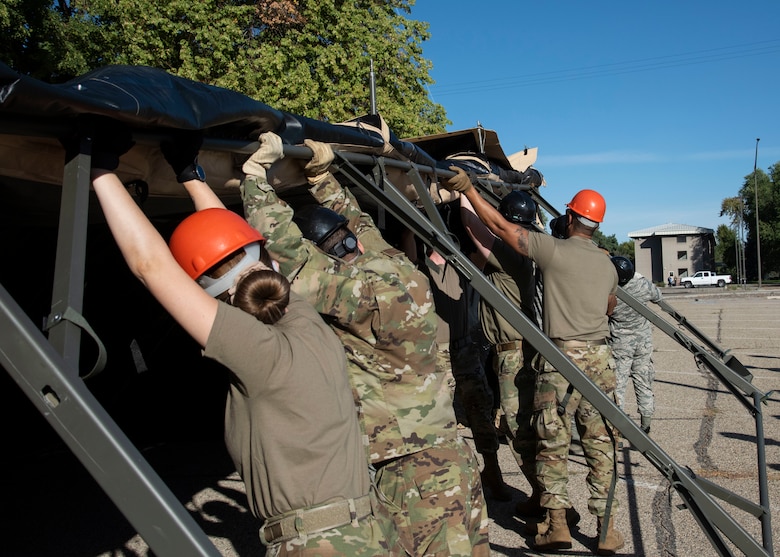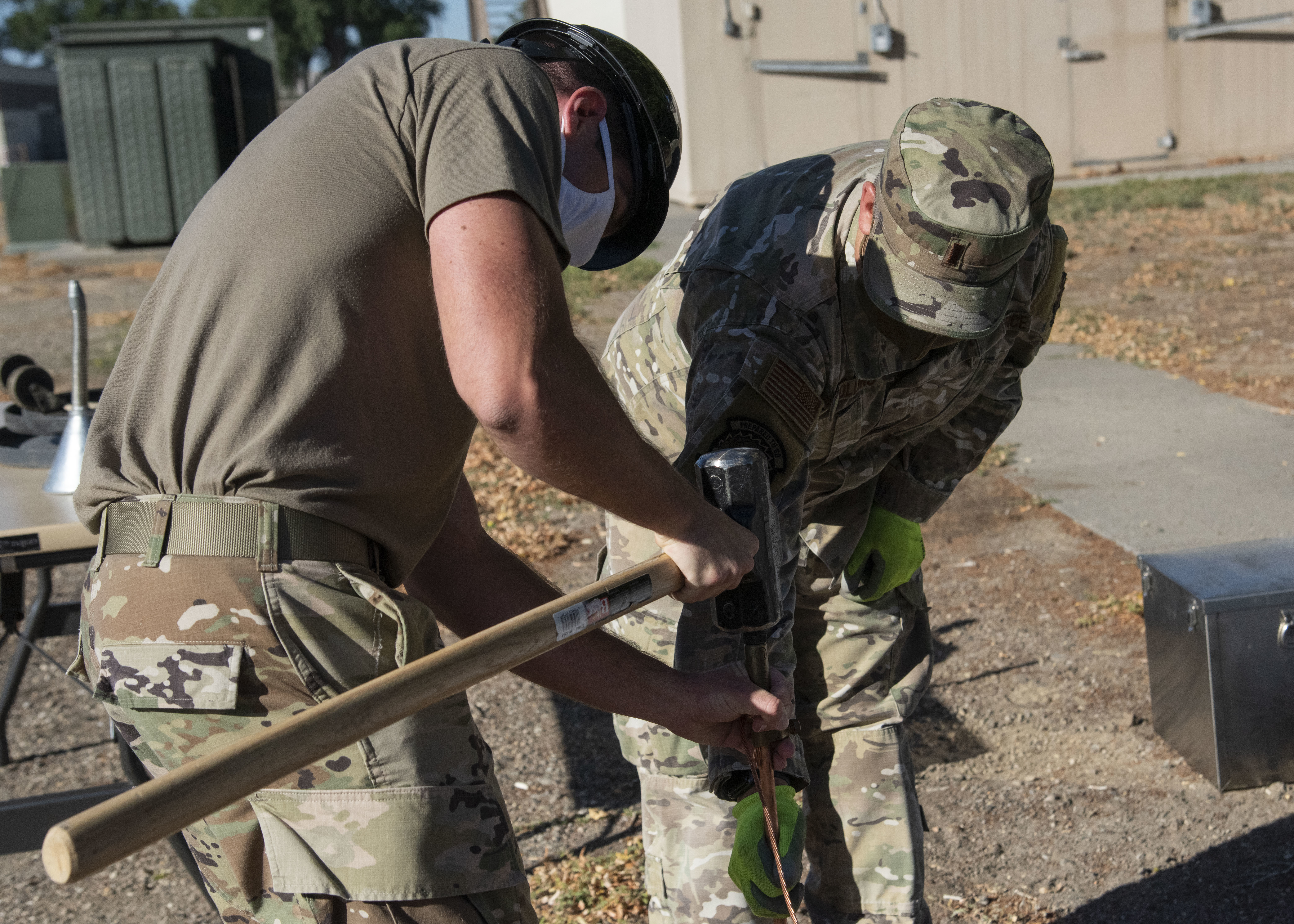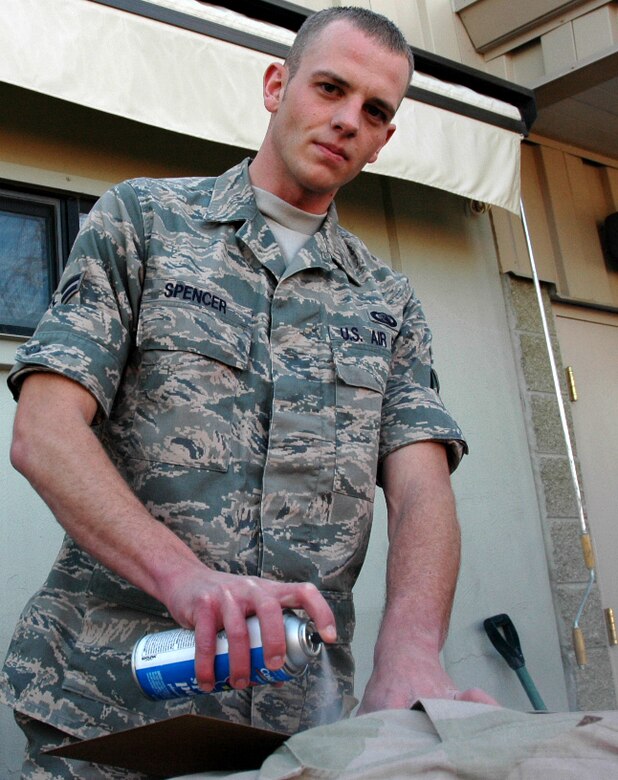Beale Air Force Base Wikipedia
Table of Content
Later, in 1948 the base was assigned to Continental Air Command , then back to Air Defense Command in 1951, then, as its usefulness waned, to the Air Force Reserve in 1973. During World War II, Hamilton was an important West Coast air training facility. Its mission was that of an initial training base for newly formed fighter groups. The airfield was rapidly expanded to a wartime status, with construction of additional barracks, mess halls, administration buildings, warehouses, Link trainer buildings, schools, hospital and other structures. Construction of the airfield began about July 1, 1932, with the airfield being originally designed to accommodate four bomb squadrons and their personnel.

During the 113th United States Congress, both the United States Senate and the United States House of Representatives voted to pass a bill that would award the Congressional Gold Medal to the World War II members of Civil Air Patrol. The medal would be presented "in recognition of their military service and exemplary record during World War II." Civil Air Patrol is a congressionally chartered, federally supported non-profit corporation that serves as the official civilian auxiliary of the United States Air Force . CAP is a volunteer organization with an aviation-minded membership that includes people from all backgrounds, lifestyles, and occupations. The program is established as an organization by Title 10 of the United States Code and its purposes defined by Title 36. Installations Las Vegas Field, Nevada Air Training Command inactivated the base on 31 December 1946.
Air Force Falcons football
Its subordinate 28th AD controlled the operational air defense Groups and Squadrons. In response to the growing crisis in the Pacific, on December 6, 1941, the 38th Reconnaissance Squadron with four B-17Cs and two new B-17Es left Hamilton Field bound for Hickam Field, Hawaii on their way to Clark Field in the Philippines to reinforce the American Far East Air Force there. After leaving Hamilton, and flying all through the night, the bombers arrived over Oahu on the morning of December 7, 1941, and faced an unusual welcome.
By 1960, fully one third of SAC's bombers and aerial refueling aircraft were on 24-hour alert, with those crews and aircraft not already airborne ready to take off from designated alert sites at their respective bases within fifteen minutes. Bomber aircraft on ground alert were armed with nuclear weapons while aerial tanker aircraft were sufficiently fueled to provide maximum combat fuel offload to the bombers. In an effort to concurrently enhance it reconnaissance capabilities, SAC also received several RB-57D Canberra aircraft in April 1956, with the aircraft initially based at Turner AFB, Georgia. In 1957, these aircraft were forward deployed to Rhein-Main Air Base, West Germany, in order to conduct reconnaissance missions along the borders of the Soviet Union and other Warsaw Pact nations. However, an unintended consequence of this deployment was that Hawker Hunter fighters of the Royal Air Force stationed in the United Kingdom and in continental Europe often intercepted these classified RB-57 missions as they returned to Rhein-Main AB from over the Baltic.
In a surprise move, Bank of Japan loosens bond yield cap
Partially equipped at first with six F-51Ds, the squadron soon transitioned to F-86D aircraft and prepared to move to Europe. In August 1954 the 496th FIS was transferred to Hahn Air Base West Germany to stand air defense alert. Although based at Hahn, the 496th FIS was assigned to the USAFE 86th Fighter-Interceptor Wing at Ramstein Air Base. The initial Air Defense Command major unit at Hamilton was the 325th Fighter Group which was reassigned from Mitchel AAF, New York on April 9, 1947.

The war-weary P-61s were soon replaced in May 1948 by the North American F-82F Twin Mustang, and on May 10 the Wing and component groups and squadrons were redesignated as All Weather. The Thunderbirds' aircraft were again changed in June 1956, to the F-100C Super Sabre, which gave the team supersonic capability. This switch was accompanied by a relocation of their headquarters to Nellis AFB, Nevada on 1 June because of maintenance and logistical difficulties of basing the F-100s at Luke, with their first show after the move being held on 23 June. It also signaled a shift in their performance routine—for example, the Cuban Eight opening routine was dropped, and emphasis was placed on low, screaming flyovers and demonstrations of takeoff performance. For a time, if the show's sponsor permitted it, the pilots would create a sonic boom; this ended when the FAA banned supersonic flight over the continental United States.
Post Cold War
Land-based ICBMs were later transferred from ACC to Air Force Space Command , while manned bombers remained in ACC. USAF nuclear forces in ACC and AFSPC were then combined with the United States Navy's Fleet Ballistic Missile submarine forces to form the United States Strategic Command , which took over the SAC Headquarters complex at Offutt AFB. The closures were the beginning of a post-Cold War process that would later become known as Base Realignment and Closure or BRAC. The LGM-118A Peacekeeper ICBM reached SAC in 1986, and the 114 Peacekeepers had a total warhead yield of about 342 megatons. This also served to offset the retirement of the obsolescent and maintenance-intensive LGM-25C Titan II ICBM, the last example of which was deactivated in May 1987.

Ent AFB never contained an airfield; the photo was probably taken at alert facilities at Hamilton AFB or Oxnard AFB, California in 1964. The first production Northrop F-89B Scorpion interceptor was accepted by the USAF during February 1951, and entered service with the 84th Fighter Interceptor Squadron. However, in retrospect, the F-89B was rushed into squadron service too rapidly. There were not enough trained pilots and radar operators, and there were not enough maintenance personnel who knew the intricacies of the complex and troublesome Hughes E-1 fire control system. The in-service rate of the F-89B was appallingly low, and crashes were all too frequent. The next step forward in bomber technology was the development of the Boeing B-17 Flying Fortress, a four-engine airplane that was bigger, faster, and heavier than any previous bomber and required a longer and stronger runway to operate.
Cadets have a rank structure similar to the United States Air Force enlisted and officer grades, excluding those of general officers. A cadet starts as a cadet airman basic, and is promoted as he or she completes each achievement. Civil Air Patrol's cadet program is a traditional military-style cadet program with almost 28,000 cadets nationwide, and is one of the three main missions of Civil Air Patrol.

The volunteer leadership of the CAP consists of the National Commanders of the Civil Air Patrol and his staff, comprising a Vice National Commander, a chief of staff, a national legal officer, a national comptroller, the chief of the CAP Chaplain Service, and the CAP inspector general. The national commander holds the grade of CAP major general, the national vice commander holds the grade of CAP brigadier general. The 422d FWS aircraft and personnel became the "F-16 Division" and the squadron heraldry transferred to the 422d Test and Evaluation Squadron.
The national headquarters staff provides program management for the organization and membership support for the 1,700-plus volunteer field units across the United States. Named Constant Peg in 1980, the operation assessed the Soviet technology and developed adversary tactics for dissimilar air combat training. After completion of training, the Aggressor pilots were assigned to the DACT squadrons, one of which was assigned to Nellis. During the 1970s, a site northwest of Nellis evaluated a Soviet "Barlock" search radar to develop techniques for countering Soviet air defense systems.
The FWS mission expanded on 15 June 1993 to include all Air Combat Command weapons (B-52 & B-1 Divisions) and in 1995, rescue helicopters (HH-60 Division). RC-135 Rivet Joint and EC-130 Compass Call courses were also added to the CCO Division in 1995, as well as a Space Division in 1996 . The GSA public sale occurred in 1985, and finally, in December 1988, the Base Realignment and Closure Commission recommended closure of the last 700 acres (2.8 km2) of government land at what was then called Hamilton Army Airfield. In 1995, the acreage held by the Army was transferred to the New Hamilton Partnership and public/private redevelopment of the former air base commenced; the name was soon changed back to its original "Hamilton Field." As a consequence of BRAC 1993's closure decisions regarding all of the U.S. Navy's San Francisco area bases , the Navy vacated its Hamilton housing in 1996. The unit flew the Douglas C-124 Globemaster II. A recall to active duty was again initiated on January 26, 1968, in response to the seizure of the USS Pueblo by North Korea.
At a lower echelon, SAC headquarters divisions included Aircraft Engineering, Missile Concept, and Strategic Communications. The 1943 claim of CAP damaging or destroying two submarines has under scrutiny proven to be inaccurate, with CAP receiving no credit for any submarine damage or destruction during the war. The ARCHER imaging system, mounted aboard the GA8 Airvan, uses visible and near-infrared light to examine the surface of the Earth and find suspected crash sites, evaluate areas affected by disasters, or examine foliage from an airborne perspective in order to flag possible marijuana plantations. Both the SDIS and ARCHER systems were used to great success in the response to Hurricane Katrina; ARCHER may be used in coordination with the SDIS system. Flight Duty Uniform – green Nomex one-piece CWU 27/P flight suit worn by United States Air Force flight crews, styled in a manner similar to Air Mobility Command flight crews, but with CAP insignia.
The following units were subordinate to the Twelfth Air Force prior to their transfer to the Fifteenth Air Force. Although the 12th AF was essentially unrecognized in the official Allied air force organization , it was of course, still a major entity in the USAAF. Army Air Forces World War II Combat Chronology 1941–1945, recorded its daily chronology entries under "NAAF" rather than "12th AF" between 1 March and 1 September 1943. Ninth Air Force retained its identity in MAC even though it was officially a sub-command of RAF Middle East Command and most of its groups were assigned to other operational commands such as NATAF after the February reorganization of the Allied air forces. The Engineering Division and the Electronic Warfare Group provide the central components in conducting the Test and Evaluation mission of the 412 TW.
The move to Nellis also resulted in the first assignment of buildings and hangar space to the team. Officers serve a two-year assignment with the squadron, while enlisted personnel serve three to four years. As the squadron performs no more than 88 air demonstrations each year, replacements must be trained for about half of the team each year, in order to provide a constant mix of experience. In addition to their air demonstration responsibilities, the Thunderbirds are part of the USAF combat force and if required, can be rapidly integrated into an operational fighter unit.
Comments
Post a Comment